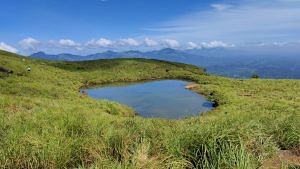
HOW A NORTH INDIAN MUSLIM WOMAN SAW WAYANAD—INCLUSIVE MOSQUES, MANGALSUTRAS FOR NON-HINDUS
My family and I chose Kerala’s Wayanad as our vacation spot this year. But it wasn’t until we arrived here from Bengaluru via Mysuru that I realised I was on Rahul Gandhi’s turf; politics hadn’t so much as crossed my mind. My focus was to simply spend quality time with my relatives and enjoy magnificent natural locales.
Before my trip to Wayanad, my knowledge of Kerala was shaped by stereotypical narratives like “God’s own country”, “Red Kerala” and the notion that migration was a way of life for Malayalis. Naturally, I was eager to experience the place firsthand, beyond what I thought I already knew about it.
As I entered Wayanad via the Bandipur Wildlife Sanctuary, the first thing that struck me was its remarkable cleanliness. Here was a place enveloped in serene beauty and tranquillity, yet rivalling cities like Dubai and London in terms of hygiene. It dawned on me that this level of cleanliness was a reflection of the local culture; there was a genuine willingness among people to keep their surroundings pristine. Whether I visited a small café or a large restaurant, I found sparkling washrooms everywhere. There was no litter on the roadsides either, a testament to the collective effort put toward maintaining the purity of these breathtaking environs.
My visit was brief, yet sufficient to observe the unique, intriguing characteristics of the place. The most notable difference I noticed in Wayanad was how rooted it was in tradition and culture – despite being part of a state that boasts over 94 per cent literacy. Unlike in North India, where a significant portion associates education with Westernisation, I found no such inclination among the people of Wayanad. It was also surprising to me that despite Kerala having the highest sex ratio in India, female participation in the workforce took the same course as in the whole country. This revelation was alarming, particularly since women here have, in the past, enjoyed significant respect and freedom.
Muslims in Wayanad
As a North Indian Muslim woman, I was also eager to see differences in religious customs.
Upon observation, I noticed many variations. For instance, Wayanad’s mosques have designated sections for women to pray, a contrast to North Indian mosques where women are typically not allowed inside. Moreover, while I had witnessed many burkha-clad women in Karnataka and other parts of the country, Wayanad was different. Muslim women here donned black chadars (traditional pieces of cloth used to envelop the body or cover the head) and wrapped themselves in dupattas instead of hiding their faces behind veils.
Interestingly, Kerala was one of the first Indian states where Muslim women protested against the hijab by setting fire to it in solidarity with the Iranian anti-hijab movement, showing that educated Muslim women were more likely to fight for their rights. In January this year, VP Zuhara filed a complaint against Mukkam Umar Faizi, a Sunni preacher who allegedly made derogatory remarks about Muslim women who didn’t wear the hijab. She is the president of NISA, an association of liberal Muslim women.
I also noticed that married South Indian Muslim and Christian women don mangalsutras called thali (alternatively known as minnu) – not something Muslims generally do in North India. This showed how culture transcends religious boundaries here.
Also read:
New, mesmerising experiences
I had never before encountered so many churches in just one area. Having seen more temples and mosques than churches, it was a welcome change to witness beautiful white ones with pointed arches and huge crosses – in proximity to mosques, that too.
I was also fascinated to see how intertwined Ayurveda was in people’s daily lives. Restaurants offered warm water instead of cold and stalls brimmed with a variety of herbal teas and Ayurvedic medicines. Ayurveda’s entrenched position in the community was further highlighted by the numerous Ayurvedic massage parlours that dotted the streets in Wayanad.
The cultural, linguistic and culinary diversity from Bengaluru to Wayanad served as a revelation, making me realise how little I knew about South India.
Last but not least, I explored the Edakkal Caves, situated 1200 feet above sea level and replete with magnificent stone age carvings. I was honestly taken aback by the high prices of products sold at the stalls here. When I tried to ask why everything was so expensive, salespeople told me that state law fixed minimum prices, ensuring fair compensation for people. While I appreciated this concept, I couldn’t help but feel confused by the paradoxical reality of a state that boasts the highest wage rates in India but exhibits significant gender wage disparity. I couldn’t shake off the allure of the magnificent caves, though. The drawings and engravings inside provided compelling evidence of ancient human habitation in the region, which truly fascinated me.
Language limitations prevented me from participating much in political conversations, but even so, I was struck by people’s overall quiet, calm and collected attitude. There was a sense that Rahul Gandhi might win the seat again because of the posters of him that dotted the area; some were larger than those featuring Prime Minister Narendra Modi. However, since I lack sufficient understanding of the constituency and its dynamics, I refrained from making any predictions.
Amana Begam Ansari is a columnist and TV news panelist. She runs a weekly YouTube show called ‘India This Week by Amana and Khalid’. She tweets @Amana_Ansari. Views are personal.
(Edited by Zoya Bhatti)
2024-05-03T11:27:34Z dg43tfdfdgfd